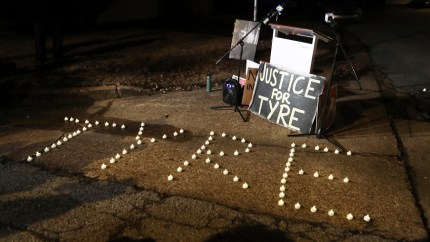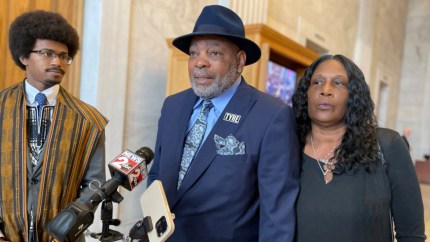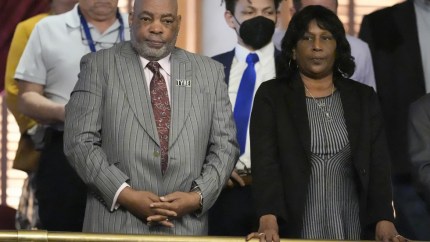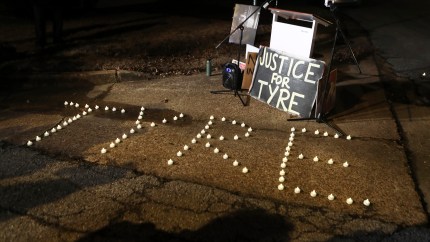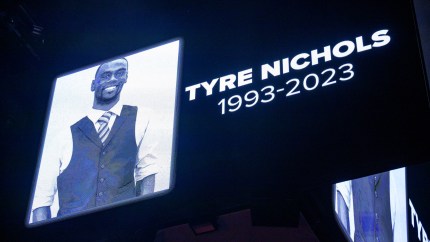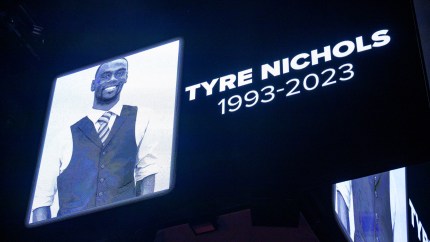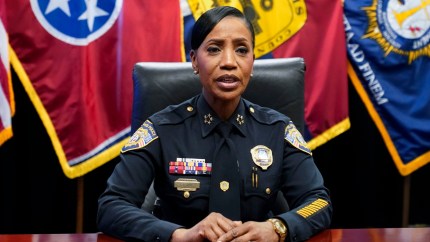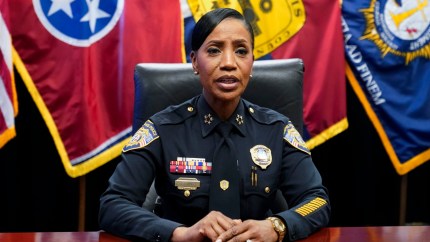Bodycam footage hasn’t brought the police accountability advocates thought it would
Across the country, thousands of officers work their shifts using body cameras but there are varying degrees of regulations and transparency.
Over the past decade, there’s been a significant push for police departments to add more body cameras in the hopes of creating accountability and being a tool for reform.
However, according to criminal justice experts and researchers, that push hasn’t led to the reform many advocates thought it would.
Research by the Bureau of Justice Statistics shows that 80% of local police departments and sheriff’s offices acquired body cameras to improve the safety of officers, increase the quality of evidence, decrease agency liability, and reduce complaints from civilians.
“Body cameras don’t alter police behavior, they just show officers behaving the way they’re trained,” Joe Margulies, a law professor at Cornell and former defense attorney, told theGrio.
Big Local News and theGrio asked 10 experts – attorneys, activists, advocates, and researchers – to review footage portraying the use of force by police in New York State, California, and Tennessee. We asked each person a series of questions surrounding each of the three incidents studied.
They could not agree on what they saw and heard in the body camera footage.
The experts had the most difficulty determining whether or not subjects were armed or even holding anything in their hands. In most cases, they couldn’t agree on whether subjects complied with police commands or if the subjects tried to back away from officers.
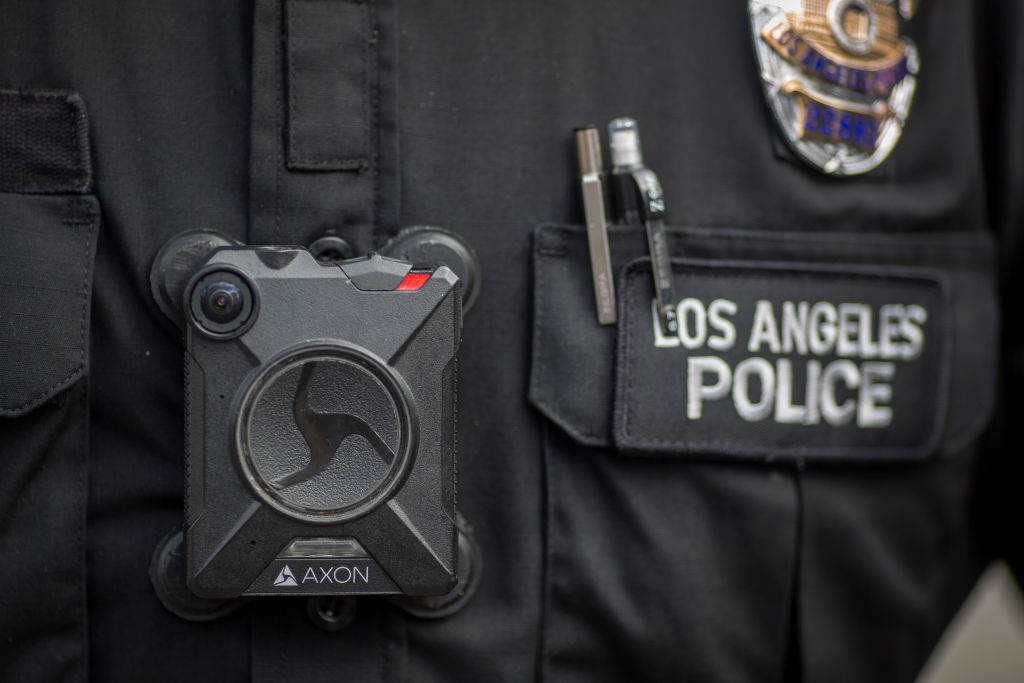
They often could not agree on what types of force were used by police or even whether the officers tried to de-escalate the situation beforehand.
There were some areas where the experts agreed: Whether or not the police issued orders, whether there was a foot pursuit, and whether the subjects approached or attacked police.
The three cases studied were: The arrest of a man wanted on a felony domestic violence warrant in Richmond, California; the arrest of two men as police were breaking up a large gathering in Rochester, New York; and the beating of Tyre Nichols that led to his death in Memphis, Tennessee.
In each case, footage from multiple body cameras was edited together before being shown. The experts were asked to consider only the actions portrayed in the videos and not footage or information from other sources.
Body camera footage never captures the entire story, said Lewis “Von” Kliem, director of the consulting division at Force Science, a firm specializing in research and training around the uses of force.
“A video can’t feel muscular tension or resistive tension,” said Kliem, who did not view the videos. “A video doesn’t smell things. A video doesn’t hear whispers. A video doesn’t pick up micro expressions and pre-attack indicators and target identifiers. A video doesn’t pick these things up, but a human does.
“A video cannot ever be used as a proxy for an officer’s experience.”
Records pertinent to the Tyre Nichols case used in this project, which were sourced from the City of Memphis website and Vimeo account, were archived and preserved by the Starling Lab for Data Integrity. By using emerging cryptographic methodologies and decentralized systems, these public records, which have historical importance, can now be protected from disappearance and made available for the public to review, should the source or authenticity of the digital media be called into question.
Recommended Stories
The Richmond, California, case occurred on July 8, 2020. Two Richmond police officers went to serve an arrest warrant for a Black man wanted in connection with a domestic violence incident. The officers, who had a canine with them, found him in a motel room.
When they arrived at the room, the door was open. The two cops shined a flashlight in the room where the suspect and another man were seated. “Come out here,” one of the officers commanded. “Come here with your hands up… the dog gonna bite you.”
The officer repeats his command while both men raise their hands. Suddenly, the cops yell, “Stop reaching,” before the dog runs in and attacks the suspect. He yells, “oh sh-t” as the dog bites him on the hand. The officers enter the room and yell “hands up” repeatedly.
The entire incident was captured on body camera. In a police report written by a supervising officer, authorities said that the man initially followed the instructions of the officer but then was “reaching for items despite being advised and warned…to stop reaching.”
In the same report, the supervisor describes a conversation after the man they arrested said that he didn’t know why the dog bit him and that he was listening to the officers. However, he pointed out that the police did not use any other force. At the end of the report, the supervisor said that the officer was within his rights to use the dog but that the officer “had a higher responsibility of making the canine announcement.”
The events unfold quickly on the bodycam video, and it’s difficult to see if the man arrested puts his hands down after the officers tell him to raise them. The Richmond Police Department did not respond to multiple requests for comment about this arrest.
Across the country, thousands of officers take to the streets with body cameras and varying degrees of regulations and transparency depending on the department.
In 2014, after Michael Brown was killed by Ferguson, Missouri, police officer Darren Wilson, the modern-day police reform movement zeroed in on the need for more body cameras. “I think there was this idea that body cameras were going to stop [officers] from misbehaving, but a lot of people didn’t understand the complexities involved,” said Alex Piquero, the former director of the Bureau of Justice Statistics.

Some of those complexities include the lack of standardized requirements for body camera footage and the number of police departments — 18,000 — that set their own rules for body cameras.
For example, the NYPD requires all officers to activate their cameras “before engaging in any police action…as well as responding to calls for service and any self-initiated investigation or enforcement activity.” The Philadephia Police Department has a similar mandate for the use of body cameras. The same goes for the city of Sacramento, which requires all uniformed officers to use body cameras while working.
However, there are jurisdictions such as Memphis, Pittsburgh, Cleveland, and Los Angeles that have different rules and standards. This lends itself to one of the significant flaws, according to experts. The police have too much control over the footage. They can edit it, redact it, and release it however and whenever they want to.
“It varies when officers are activating cameras. Some activate them all the time, others do it when they interact with community members,” said Thaddeus Johnson, a former police officer and current criminology professor at Georgia State University. “The policy and the legal issues go hand in hand.”
From a reform perspective, the footage is rarely used to hold police accountable because few police misconduct cases make their way to trial. “That’s usually when you would use body-camera footage in a courtroom,” Margulies, the Cornell law professor, said.
Still, the footage can be a useful tool. The scenes captured can provide context on how police interact with a population and also can be used in certain criminal cases. “They’re not designed to solve the problems, they’re designed to aid in the identification of problems that can hopefully be addressed through other things,” Piquero said, “whether that’s training, retraining, or disciplinary actions.”
One area where police and experts have found body camera footage to be useful is in training officers on what to do.
“I’ve been a strong advocate of using body camera footage in training,” said Mike Ranalli, program manager for Lexipol, a consultant firm specializing in police training and policies. “This serves two purposes: correcting deficiencies and highlighting officers doing things right. This can be particularly useful in training officers to respond to situations involving people in crisis.”
More police agencies need to use body camera video in their training, said Bryce Peterson, an expert in corrections and policing focusing on body-worn cameras at the Center for Naval Analyses, a federally funded research organization based in Virginia that specializes in safety and security issues.
“Most departments should be using body camera footage to inform their training, collecting both good and bad examples of officer-citizen interactions and using them to train future officers,” Peterson said.

Showing cadets footage of “inappropriate behavior as an example of what not to use and clarify what you should be using” could be as helpful as showing them an example of successful de-escalation, where the officers avoid using force, Peterson said. “Showing good and bad behavior from this footage is a really kind of critical component of these body camera programs.”
But training with these videos can be problematic too, said Chad Marlow, senior policy counsel at the ACLU. Advocates have noticed that police have started to yell “stop resisting, stop resisting, stop resisting” as cameras recorded.
“Police officers are being trained in how to manipulate body camera video,” Marlow said. “… It creates a narrative,” he said. “In certain cases, there have been other surveillance cameras, and you can see from a distance the person isn’t resisting at all.”
Whether video is used to analyze police actions or to help train new cadets, accountability for police departments is going to come from the top down, experts say. It falls on the chief and other police leaders to discipline their officers when they’re caught breaking the rules and share information with those who are policed by their departments.
“It’s still us versus them when it comes to police,” Johnson said. “The more transparent police departments are, the more willing the public will be to trust them.”
Irene Casado Sanchez and Lisa Setyon contributed to this report.
Additional research and support for this reporting series on body cameras was provided by: Eric Sagara, Dana Amihere, Dilcia Mercedes, Lisa Seyton, Irene Casado Sanchez, Lisa Pickoff White, Ananya Tiwari and Lindsay Walker.
This article was reported in partnership with Big Local News at Stanford University, with preservation technology by The Starling Lab for Data Integrity (co-founded by Stanford University’s Department of Electrical Engineering and USC Shoah Foundation.) The series was also funded by a grant from the Pulitzer Center for Crisis Reporting.
Never miss a beat: Get our daily stories straight to your inbox with theGrio’s newsletter.
